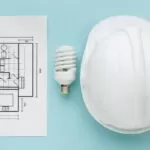Are you tired of spending a fortune on your building’s HVAC system without seeing any significant energy savings? Well, imagine a scenario where you could drastically reduce your energy costs while still maintaining a comfortable environment for your occupants.
Picture this: a commercial building in a bustling city successfully implementing three budget-friendly HVAC system designs that not only cut down on energy consumption but also contribute to the overall efficiency of the building.
Curious to know more about these cost-effective solutions that could revolutionize your HVAC system? Qusrawi Mechanical Engineering Services writes the best guide to help you understand this matter. Keep reading to discover three innovative designs that are sure to pique your interest.
Table of Contents
Variable Refrigerant Flow (VRF) Systems
Variable Refrigerant Flow (VRF) systems provide efficient and customizable heating, ventilation, and air conditioning solutions for budget-conscious consumers. With the advancement of smart thermostat technology and the increasing popularity of solar-powered HVAC systems, VRF systems have become even more appealing.
One of the key advantages of VRF systems is their ability to adapt to changing heating and cooling needs. Using smart thermostat technology, these systems can automatically adjust the temperature based on occupancy, time of day, and weather conditions. This not only ensures optimal comfort but also helps save energy and reduce utility bills.
Moreover, VRF systems can be integrated with solar-powered HVAC systems, making them even more cost-effective and environmentally friendly. By harnessing the power of the sun, these systems can generate electricity to run the HVAC system, further reducing energy consumption and carbon emissions.
In addition to their energy efficiency, VRF systems offer a high level of customization. They can be designed to meet the specific heating and cooling requirements of different zones within a building, allowing for individual temperature control and maximizing comfort.
Geothermal Heat Pump Systems
If you’re looking for another efficient and customizable heating, ventilation, and air conditioning solution, geothermal heat pump systems offer a budget-friendly option. Geothermal heat pumps harness the constant temperature of the earth to provide consistent heating and cooling throughout the year.
One of the main benefits of geothermal heat pump systems is their high energy efficiency. These systems can provide up to four units of heating or cooling for every unit of electricity used, resulting in significant energy savings and lower utility bills.
The installation process for geothermal heat pump systems involves drilling boreholes into the ground to access the earth’s thermal energy. Pipes are then inserted into these boreholes and a heat transfer fluid is circulated through the pipes. This fluid absorbs heat from the ground in winter and transfers it to the building for heating. In summer, the process is reversed, with the heat transfer fluid absorbing heat from the building and releasing it into the ground.
Geothermal heat pump systems also have a long lifespan, with underground components lasting for decades. Additionally, these systems are quiet, require minimal maintenance, and have lower greenhouse gas emissions compared to traditional HVAC systems.
While the upfront installation costs may be higher than other systems, the long-term energy savings and durability make geothermal heat pump systems a cost-effective choice for efficient buildings.
Energy Recovery Ventilation (ERV) Systems
Energy Recovery Ventilation (ERV) systems are a cost-effective solution for improving indoor air quality while minimizing energy consumption. These systems offer numerous benefits that make them an attractive option for budget-friendly HVAC system designs.
One of the main benefits of an ERV system is its ability to recover energy from outgoing stale air and transfer it to incoming fresh air. This process helps to reduce the load on the heating and cooling systems, resulting in energy savings and lower utility bills. Additionally, ERV systems help to maintain a comfortable and healthy indoor environment by removing pollutants, allergens, and odors from the air.
The installation process of an ERV system involves several steps. First, a thorough assessment of the building’s ventilation needs is conducted to determine the system size and capacity. Then, the ERV unit is installed in an appropriate location, typically in the mechanical room or attic. The unit is connected to the ductwork, allowing for the exchange of air between the indoor and outdoor environments. Finally, the system is tested and calibrated to ensure optimal performance.
Frequently Asked Questions
Installing a VRF system costs more upfront compared to a traditional HVAC system. However, the energy savings of VRF systems can offset the initial cost over time, making it a cost-effective choice for efficient buildings.
Geothermal heat pump systems have different maintenance requirements compared to traditional HVAC systems. It’s important to regularly check and clean the filters, inspect the ground loop system, and schedule professional maintenance to ensure optimal performance and energy efficiency.
You can retrofit existing buildings with ERV systems, which offer benefits for indoor air quality. These systems can be installed in both new construction and older buildings, making them a versatile option.
You can expect significant energy savings with VRF systems, geothermal heat pump systems, and energy recovery ventilation systems compared to traditional HVAC systems. These designs offer both energy efficiency benefits and cost effectiveness.
Conclusion
So, if you’re looking for budget-friendly and efficient HVAC system designs for your building, consider the options of Variable Refrigerant Flow (VRF) systems, Geothermal Heat Pump systems, and Energy Recovery Ventilation (ERV) systems.
These designs provide effective temperature control and energy efficiency, helping you save on costs in the long run.
With their advanced technology and cost-effective features, these HVAC systems are worth considering for any building project.




